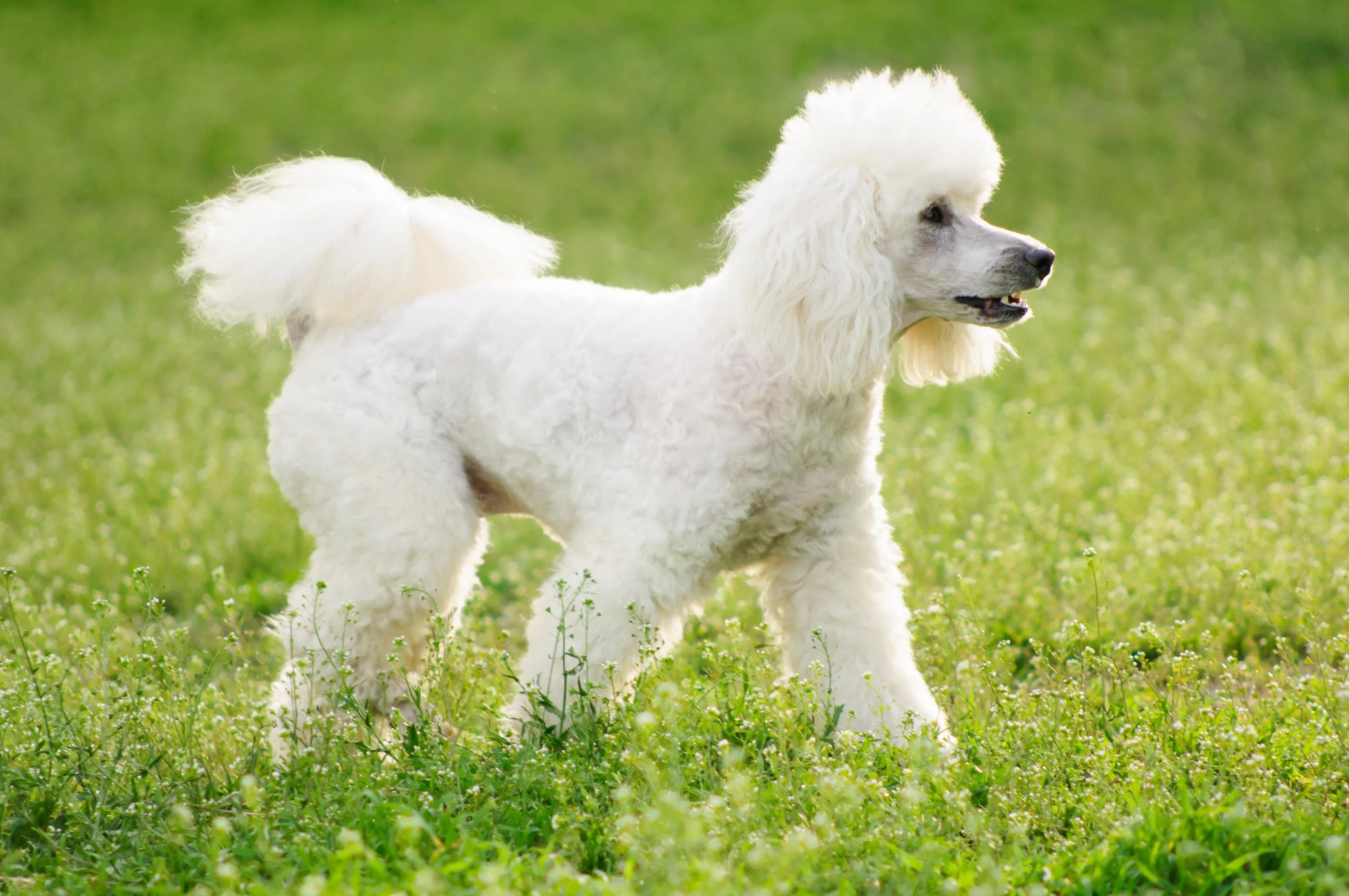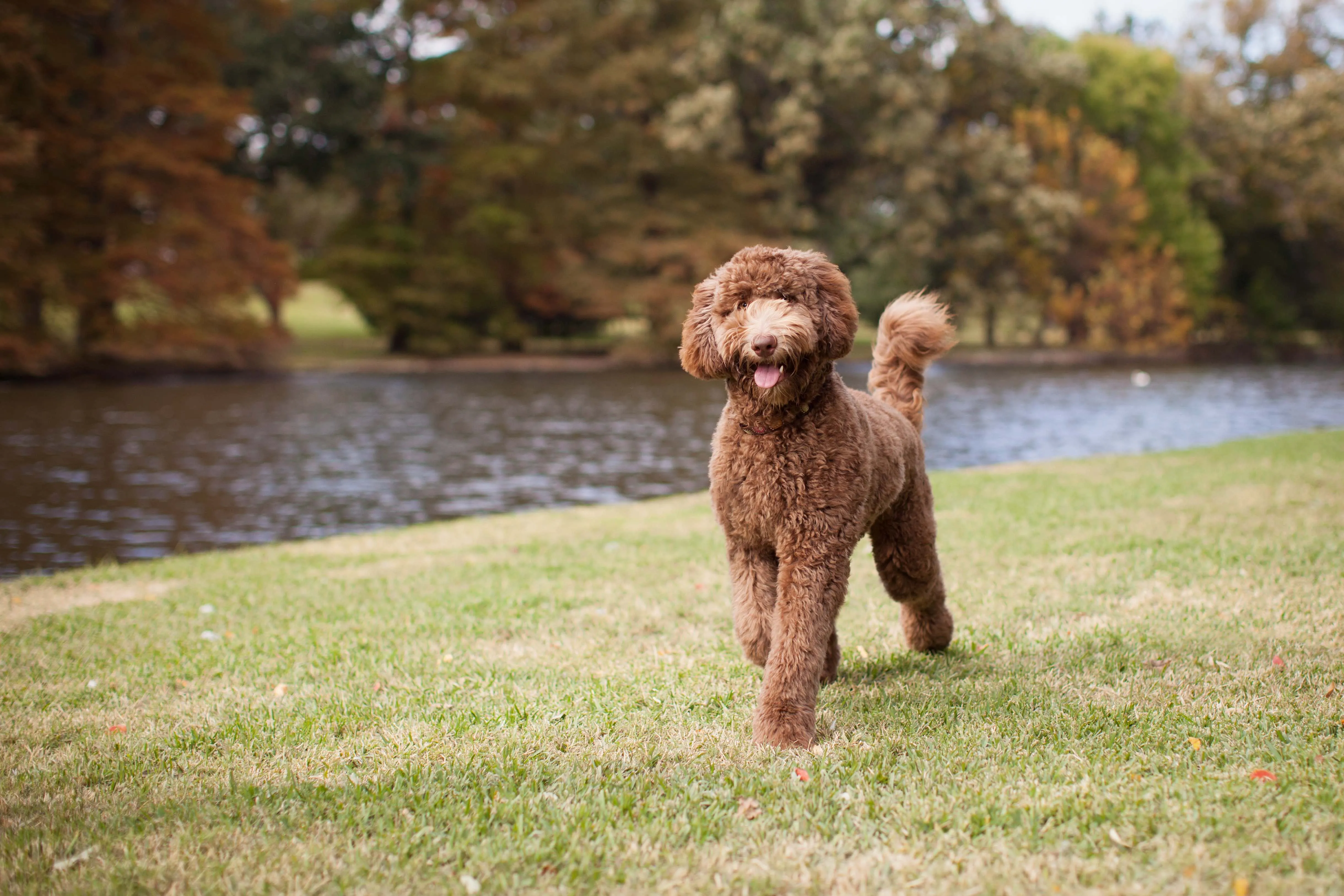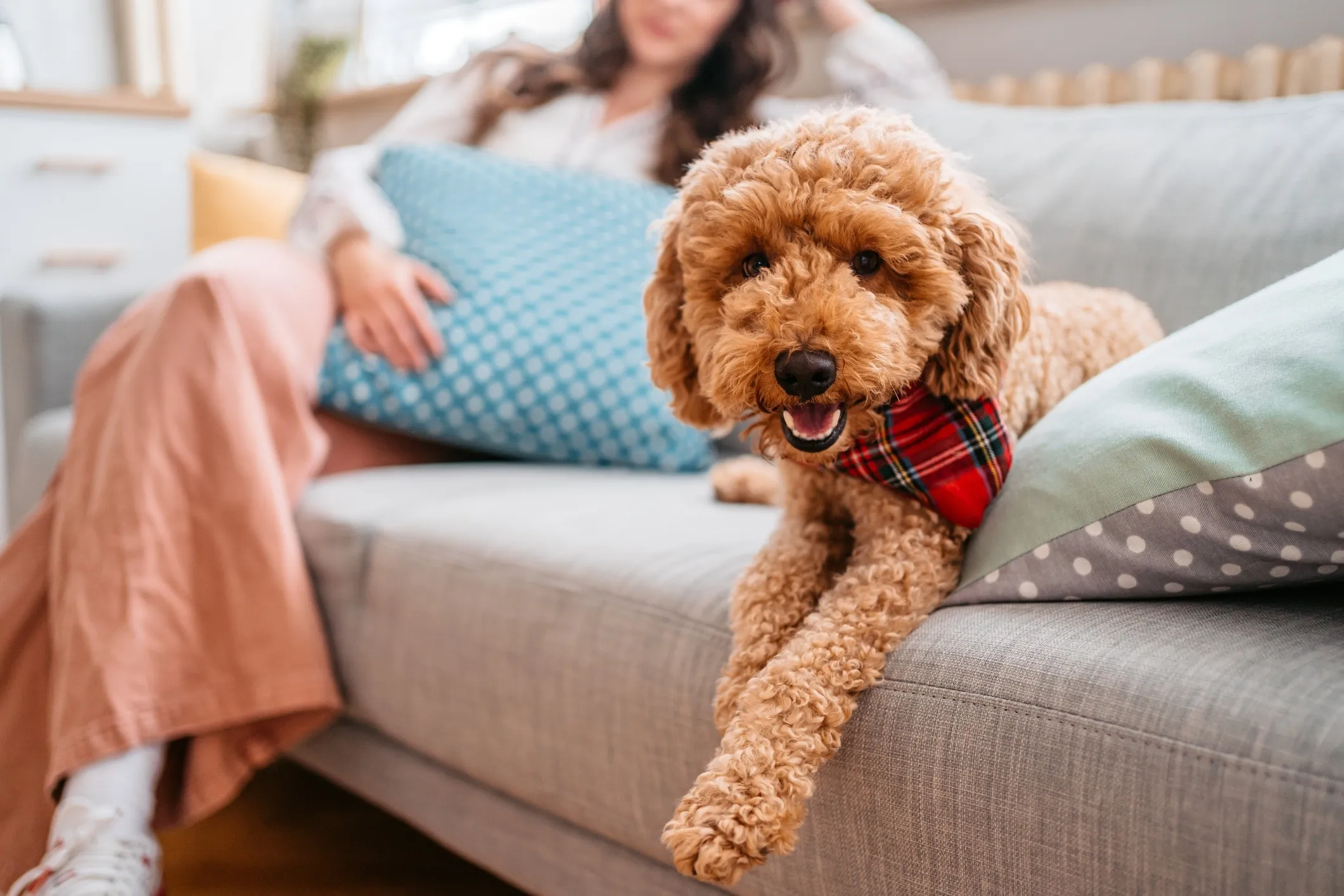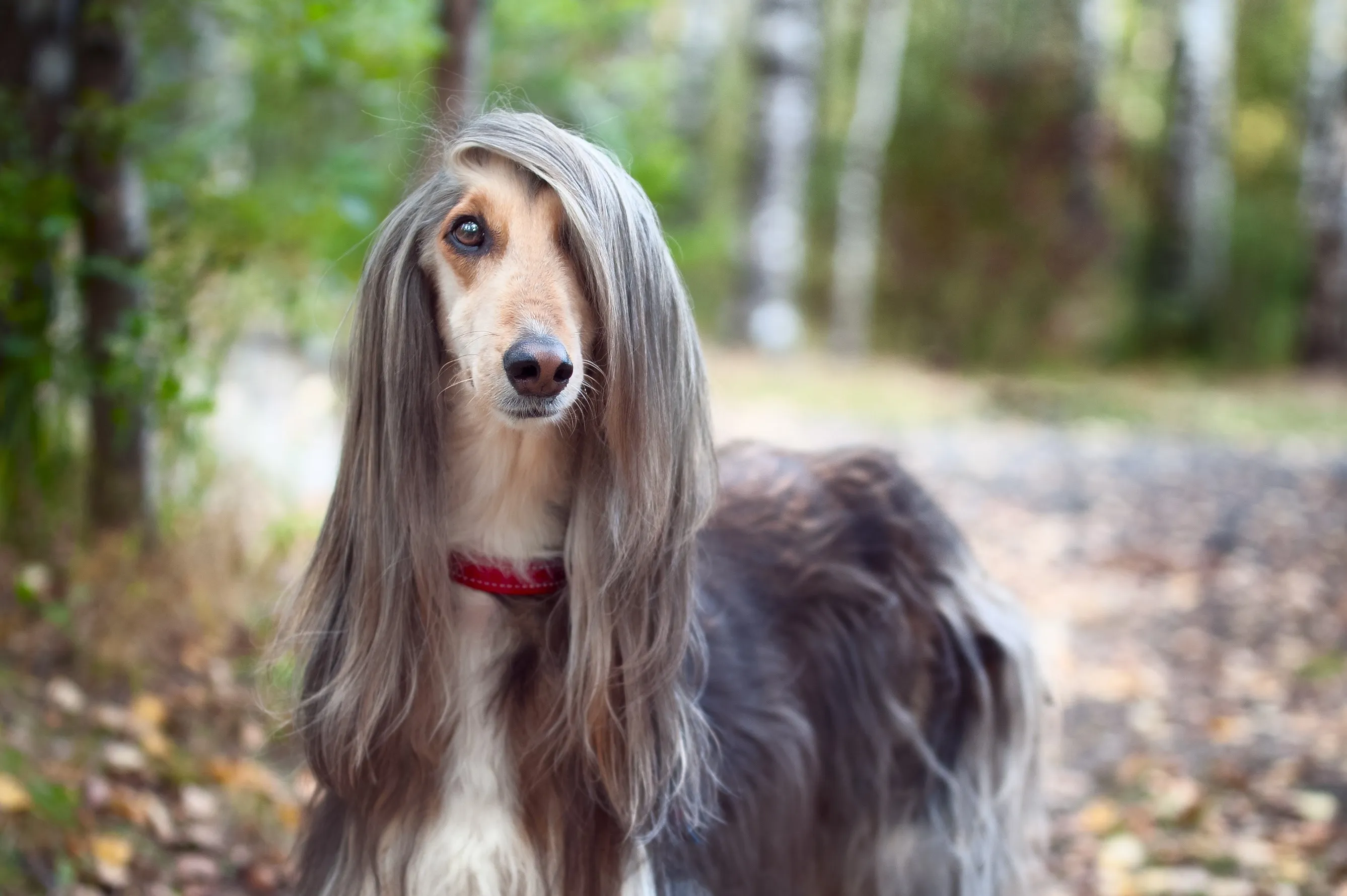For many dog lovers, the dream of owning a furry friend is often challenged by allergies. While no dog is entirely “hypoallergenic,” certain large breeds are known for producing fewer allergens and shedding minimally, making them ideal companions for those with sensitivities. These low-shedding giants offer the loyal companionship and impressive presence of a big dog without constantly covering your home in hair and dander. If you’re seeking a substantial canine companion that won’t exacerbate your allergies, exploring these magnificent breeds is an excellent first step.
Understanding what makes a dog suitable for allergy sufferers is crucial. Most dog allergies are triggered not by hair itself, but by dander (flakes of dead skin), saliva, and urine, all of which contain allergenic proteins. Dogs that shed less tend to release less dander into the environment. When considering a large, low-shedding breed, it’s essential to remember that consistent grooming and a clean living environment are still key to managing potential allergic reactions. You might also be interested in finding the best medium to large size family protection dog that fits your specific family needs and allergy concerns.
Understanding “Hypoallergenic” for Large Breeds
The term “hypoallergenic” can be misleading, as it implies a complete absence of allergens. In reality, it refers to breeds that are less likely to trigger allergic reactions due due to their coat type and reduced shedding. Large dogs with hair-like coats (rather than fur) or single coats, and those that shed minimally, typically distribute fewer allergens throughout the home. This doesn’t mean they are 100% allergen-free, but they are generally a much better fit for sensitive individuals. Even dogs that don’t produce a lot of dander still contain allergens in their skin, saliva, and urine, which can trigger responses such as coughing, itching, or wheezing.
Regular grooming, including brushing and bathing, is critical for any low-shedding dog, regardless of size. This practice helps remove loose dander and hair before it has a chance to spread. For large breeds, this commitment to grooming can be significant, but it’s an essential part of maintaining an allergen-reduced household. Additionally, maintaining a clean home environment further minimizes allergen accumulation, making life more comfortable for everyone.
Top Large Dog Breeds That Don’t Shed
Many large dog breeds are excellent choices for individuals seeking a low-shedding companion. These intelligent and often active dogs can bring immense joy to families without the constant battle against excessive pet dander. Here are some of the best large dog breeds known for their minimal shedding and wonderful temperaments.
1. Standard Poodle
The Standard Poodle is perhaps the most iconic “hypoallergenic” dog, and for good reason. These highly intelligent and elegant dogs boast a dense, curly coat that sheds very little, trapping dander within its coils. Originally bred as water retrievers, Standard Poodles are robust, athletic, and require plenty of mental and physical stimulation. Their dignified appearance is matched by a playful and affectionate nature, making them wonderful family pets.
To keep their luxurious coat free of mats and tangles, Standard Poodles need consistent grooming. This typically involves daily brushing and professional grooming every four to six weeks. Their size, combined with their non-shedding coat, makes them a prime choice for those looking for a substantial dog that is also allergen-friendly.
 White Poodle with a curly coat walking through lush green grass
White Poodle with a curly coat walking through lush green grass
2. Standard Schnauzer
The Standard Schnauzer offers a robust, intelligent, and spirited companion in a medium-to-large package. Weighing up to 45 pounds, these dogs possess a wiry, dense double coat that sheds minimally. Their distinctive bearded snout and expressive eyebrows give them a unique and charming appearance. Standard Schnauzers are known for their strong protective instincts and lively personalities, making them excellent watchdogs and active family members.
This breed thrives on regular exercise and mental engagement. Their low-shedding coat requires weekly brushing and professional stripping or clipping every few months to maintain its texture and minimize shedding. Proper grooming ensures their coat remains healthy and their dander is managed effectively for allergy sufferers.
3. Giant Schnauzer
True to their name, Giant Schnauzers are among the largest of the non-shedding breeds, capable of reaching heights over 27 inches and weighing up to 85 pounds. These impressive dogs share the same wiry, low-shedding coat as their smaller Schnauzer relatives, making them an excellent choice for those seeking a truly large, allergen-friendly companion.
Giant Schnauzers are known for their powerful build, unwavering loyalty, and formidable presence. They are highly intelligent and require consistent training and extensive exercise to channel their energy positively. Activities such as long walks, running, hiking, and interactive games like fetch are essential to keep a Giant Schnauzer happy and well-behaved. Their grooming needs are similar to the Standard Schnauzer, requiring regular brushing and professional grooming to maintain their distinctive coat.
 A large, black Giant Schnauzer with a wet coat and a blue bow collar stands in a park
A large, black Giant Schnauzer with a wet coat and a blue bow collar stands in a park
4. Portuguese Water Dog
Originally bred to assist fishermen in Portugal, the Portuguese Water Dog is a robust, medium-to-large breed known for its thick, curly, and non-shedding coat. These active and intelligent dogs are renowned for their love of water and their keen retrieving skills. They are highly trainable, friendly, and make wonderful companions for active families.
Portuguese Water Dogs possess a high energy level and require regular, vigorous exercise to remain happy and healthy. Swimming is often a favorite activity for them, making them perfect companions for lakeside or coastal living. Their single coat requires frequent brushing and professional grooming to prevent matting and keep it in optimal condition, further reducing the spread of allergens.
 A black and white Portuguese Water Dog wearing a red maple leaf bandana stands in front of a body of water
A black and white Portuguese Water Dog wearing a red maple leaf bandana stands in front of a body of water
5. Labradoodle
The Labradoodle is a popular crossbreed, combining the friendly nature of a Labrador Retriever with the low-shedding coat and intelligence of a Poodle. Originally bred to be hypoallergenic service dogs, Labradoodles have become cherished family pets due to their amiable temperament, trainability, and minimal shedding.
Labradoodles can vary in size, but standard Labradoodles are large dogs, inheriting the stature of their Labrador and Standard Poodle parents. They are generally intelligent, gentle, and make excellent companions, especially when well-socialized and exercised from an early age. Their wavy or curly coats require regular brushing to prevent tangles and maintain their low-shedding qualities.
 A brown Standard Labradoodle walks confidently through a park
A brown Standard Labradoodle walks confidently through a park
6. Goldendoodle
Another beloved “doodle” breed, the Goldendoodle is a cross between a Golden Retriever and a Poodle. Like the Labradoodle, they are celebrated for their friendly disposition, high intelligence, and low-shedding coats. While often known for their golden hues, Goldendoodles come in a wide range of colors and coat textures. These dogs are generally large, reflecting their Golden Retriever and Standard Poodle heritage, and they thrive in active family environments.
Goldendoodles need frequent grooming with a slicker brush to prevent matting and ensure their coat remains healthy and allergen-friendly. Their affectionate nature and eagerness to please make them highly trainable and wonderful additions to families seeking a large, low-shedding dog.
 A Goldendoodle lying comfortably on a couch with a person sitting in the background
A Goldendoodle lying comfortably on a couch with a person sitting in the background
7. Irish Water Spaniel
The Irish Water Spaniel is a distinctive and energetic medium-to-large breed, characterized by its dense, tightly curled, liver-colored coat that sheds minimally. These intelligent and friendly “water dogs” were historically bred for retrieving game from water, a task for which their thick, waterproof coat was perfectly suited.
Irish Water Spaniels are highly trainable and possess a playful, affectionate nature. They require a significant amount of exercise to stay happy and healthy, making them ideal for active individuals or families who can provide ample opportunities for swimming, long walks, and other engaging activities. Regular grooming is essential to keep their unique coat in top condition and prevent matting.
8. Aussiedoodle
The Aussiedoodle is a dynamic crossbreed resulting from the pairing of an Australian Shepherd and a Standard or Miniature Poodle. These intelligent and energetic dogs are known for their low-shedding coats, inheriting this trait primarily from their Poodle lineage. Aussiedoodles can vary in size depending on the Poodle parent, but standard Aussiedoodles are certainly large dogs.
Thanks to both parent breeds, Aussiedoodles are exceptionally smart and require considerable mental stimulation and physical exercise. If they become bored or under-exercised, they can develop destructive behaviors. They thrive on activities like agility, training, and interactive puzzle toys. Regular brushing helps manage their wavy or curly coats and minimize any shedding.
9. Bernedoodle
Bernedoodles combine the gentle giant personality of a Bernese Mountain Dog with the intelligence and low-shedding qualities of a Poodle. These large hypoallergenic dogs are renowned for their friendly, affectionate nature and calm demeanor, making them a popular choice for families with children and other pets.
Bernedoodles are typically substantial in size, capable of reaching considerable weights and heights, offering the presence of a large dog without the heavy shedding. They require plenty of exercise to stay active and healthy, enjoying walks, playtime, and outdoor adventures. Their wavy or curly coats necessitate regular grooming to prevent matting and maintain their low-shedding characteristics.
 A large Bernedoodle dog lies in the grass with its tongue playfully sticking out
A large Bernedoodle dog lies in the grass with its tongue playfully sticking out
10. Afghan Hound
Known for their striking elegance and flowing, silky coats, Afghan Hounds are among the oldest dog breeds and are considered low-shedding due to their hair-like texture. These tall, slender dogs were bred for speed and are one of the fastest dog breeds in the world. While their appearance might suggest high maintenance, their unique coat, when properly cared for, contributes to their hypoallergenic qualities.
Afghan Hounds are loving and devoted to their families but can be aloof or independent with strangers. Early and consistent socialization is crucial for this breed to develop a well-adjusted temperament. Their long coats require dedicated regular grooming to prevent tangles and mats, which also helps manage dander.
 A graceful gray and tan Afghan Hound looks directly at the camera
A graceful gray and tan Afghan Hound looks directly at the camera
11. Barbet
The Barbet, pronounced “bar-bay,” is a cheerful and robust “big hypoallergenic dog” with a shaggy, woolly coat. Originating from France, the name Barbet refers to their characteristic bearded chin. These dogs are natural water lovers, with their protective curly coat making them excellent swimmers. They are known for their amiable temperament, making them wonderful family companions.
Barbets typically fall into the medium-to-large size category, offering a substantial presence without excessive shedding. To keep their woolly coats in good condition, especially after their favorite swimming sessions, regular brushing with a slicker or pin brush two to three times a week is necessary. This grooming routine helps prevent mats and minimizes allergen distribution.
12. Peruvian Inca Orchid
The Peruvian Inca Orchid is a rare and ancient breed that comes in three sizes: toy, miniature, and standard (large). The hairless variety is distinctly hypoallergenic, though there is also a coated version that still produces fewer allergens than many breeds. The large Peruvian Inca Orchid offers a unique, elegant, and allergen-friendly option for those seeking a substantial dog.
These dogs are known for being alert, affectionate with their families, and somewhat reserved with strangers. Their hairless skin requires protection from the sun and cold, while the coated variety has a short, single coat that sheds minimally. As the national dog of Peru, they possess a rich history and a dignified bearing.
Tips for Living with a Large, Low-Shedding Dog
Even with a low-shedding breed, managing allergies effectively requires a proactive approach. Adopting a large dog, regardless of its coat type, means a greater commitment to care and a larger presence in your home. These tips will help ensure a harmonious environment for both you and your allergen-friendly giant.
Maintain Regular Grooming
Regular grooming is paramount for low-shedding breeds. While their coats don’t shed much, they can still accumulate dander and require attention to prevent matting. Ideally, these dogs should be brushed several times a week, and bathed every four to six weeks. Using a special shampoo designed to reduce pet dander can further help minimize allergens. Many hypoallergenic dogs also require regular trimming or professional grooming to keep their coats healthy and manageable. Budgeting for professional groomer visits or learning how to groom your large pup at home is a wise investment.
Keep Your Home Clean
Minimizing allergens in your environment extends beyond just grooming your dog. Regular cleaning of your home is crucial. This includes vacuuming frequently with a HEPA filter vacuum cleaner, dusting surfaces regularly, and washing bedding (both yours and your dog’s) to reduce accumulated pet dander. Using air purifiers with HEPA filters and ensuring good ventilation can also help remove airborne allergens, creating a cleaner and more comfortable living space for everyone. Consider durable and easily cleanable materials for furniture and flooring to aid in allergen control.
Consult Your Doctor and Veterinarian
Managing allergies and preventing allergic reactions is a joint effort between you and healthcare professionals. It’s important to consult with your doctor about personal allergy management strategies, which might include medication, nasal sprays, or allergy injections. Additionally, discussing your dog’s specific needs with your veterinarian is crucial. They can advise on the best grooming practices, specialized shampoos, and overall health care to keep both your dog happy and your allergies in check. Remember, while these dogs shed minimally, allergens can still be present in their saliva and urine, so avoiding close contact with these bodily fluids is also advisable.
Bringing home a large, low-shedding dog can significantly improve the quality of life for individuals with allergies, allowing them to experience the profound joy and companionship that only a canine friend can offer without the constant burden of severe allergic reactions. For more insights into dog breeds, you can explore articles on very large dog breeds pictures and names to find your perfect match.
